-
 Bitcoin
Bitcoin $118600
-1.16% -
 Ethereum
Ethereum $3616
-2.94% -
 XRP
XRP $3.174
-10.23% -
 Tether USDt
Tether USDt $1.000
0.01% -
 BNB
BNB $773.4
-0.42% -
 Solana
Solana $189.3
-6.58% -
 USDC
USDC $1.000
0.02% -
 Dogecoin
Dogecoin $0.2406
-10.24% -
 TRON
TRON $0.3098
-1.24% -
 Cardano
Cardano $0.8139
-9.10% -
 Hyperliquid
Hyperliquid $44.01
-2.71% -
 Stellar
Stellar $0.4266
-9.64% -
 Sui
Sui $3.699
-7.29% -
 Chainlink
Chainlink $18.21
-6.60% -
 Hedera
Hedera $0.2465
-9.46% -
 Bitcoin Cash
Bitcoin Cash $512.3
-2.27% -
 Avalanche
Avalanche $24.03
-5.62% -
 Litecoin
Litecoin $112.2
-5.21% -
 UNUS SED LEO
UNUS SED LEO $8.964
-0.26% -
 Shiba Inu
Shiba Inu $0.00001386
-9.81% -
 Toncoin
Toncoin $3.188
-4.76% -
 Ethena USDe
Ethena USDe $1.001
-0.02% -
 Polkadot
Polkadot $4.135
-7.84% -
 Uniswap
Uniswap $10.16
-5.19% -
 Monero
Monero $310.5
-2.84% -
 Bitget Token
Bitget Token $4.702
-2.53% -
 Dai
Dai $0.0000
0.01% -
 Pepe
Pepe $0.00001270
-9.07% -
 Aave
Aave $290.7
-5.84% -
 Bittensor
Bittensor $424.7
-5.28%
How to calculate the decline after the head and shoulders top pattern breaks through the neckline?
The head and shoulders top pattern signals a potential trend reversal, with the price likely to drop after breaking below the neckline.
Jun 29, 2025 at 07:43 am
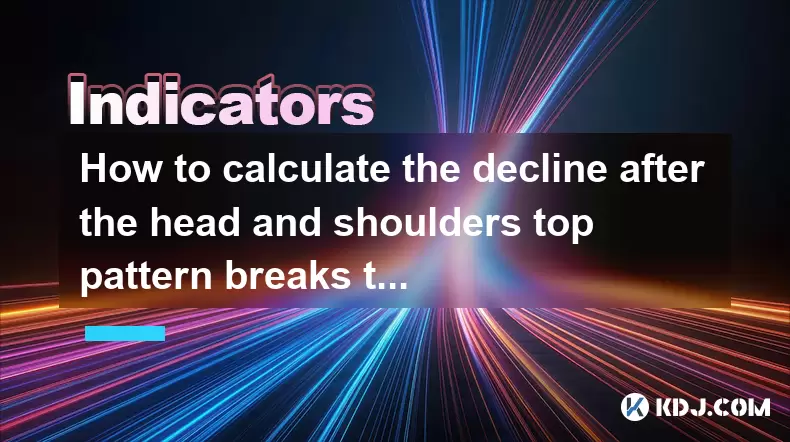
Understanding the Head and Shoulders Top Pattern
The head and shoulders top pattern is a widely recognized reversal formation in technical analysis, especially within the cryptocurrency market. It typically signals the end of an uptrend and the beginning of a downtrend. The structure consists of three peaks: the left shoulder, the head (the highest peak), and the right shoulder. These peaks are connected by a trendline called the neckline, which acts as a key support level. When the price breaks below this neckline, it confirms the validity of the pattern and often marks the start of a significant decline.
Identifying the Neckline Break
To calculate the potential drop after the pattern completes, the first step involves identifying the exact point where the price breaks through the neckline. This break must be confirmed with strong volume or candlestick confirmation, such as a bearish engulfing pattern or a long red candle closing below the neckline. Traders should avoid premature entries before the break is fully validated. Once the break is confirmed, the next phase begins—measuring the projected decline.
Measuring the Distance from the Head to the Neckline
The standard method for projecting the decline involves measuring the vertical distance between the highest point of the head and the neckline. This measurement provides a baseline for estimating how far the price may fall after breaking the neckline. For instance, if the head reaches $10,000 and the neckline is at $9,000, the difference is $1,000. This value is then subtracted from the breakout point to determine the target price. In this case, if the breakout occurs at $9,000, the projected downside target would be $8,000.
Applying the Measurement to the Breakout Point
Once the distance is calculated, traders apply it to the actual breakout level. If the price closes decisively below the neckline at $500, and the measured distance from the head to the neckline is $100, the expected price objective becomes $400. This projection serves as a guide rather than a guarantee, but it has proven effective across multiple crypto assets. It's crucial to remember that markets can overshoot or undershoot these targets depending on volatility and broader market conditions.
Incorporating Risk Management Strategies
While the head and shoulders pattern offers a structured approach to forecasting declines, traders must incorporate risk management techniques when acting on this signal. Setting stop-loss orders above the right shoulder helps mitigate losses if the pattern fails. Additionally, using trailing stops can protect profits as the price moves downward. Volume confirmation remains essential—low-volume breakouts may indicate weak conviction among sellers, increasing the risk of a false breakdown.
Frequently Asked Questions
What happens if the price retests the neckline after breaking down?
It's common for the price to retest the broken neckline as resistance after a head and shoulders breakdown. This retest can offer a second opportunity to enter short positions or reinforce confidence in the existing trade setup. However, traders should wait for rejection at that level before taking action.
Can the head and shoulders pattern appear on any time frame in crypto charts?
Yes, the head and shoulders top pattern can form on all time frames—from one-minute charts to weekly charts. However, patterns formed on higher time frames, such as daily or weekly, tend to carry more weight and result in stronger follow-through.
Is it necessary for both shoulders to be symmetrical in height?
No, symmetry between the shoulders is not required. While textbook patterns show balanced shoulders, real-world examples, especially in crypto, often feature uneven shoulders. The critical factor remains the break of the neckline and the distance from the head to that line.
How reliable is the head and shoulders pattern in predicting drops in crypto prices?
Historically, the head and shoulders pattern has shown high reliability in traditional markets. In cryptocurrencies, due to increased volatility, its effectiveness depends on proper identification and confirmation via volume and candlestick behavior. It remains one of the most trusted reversal signals among experienced traders.
Disclaimer:info@kdj.com
The information provided is not trading advice. kdj.com does not assume any responsibility for any investments made based on the information provided in this article. Cryptocurrencies are highly volatile and it is highly recommended that you invest with caution after thorough research!
If you believe that the content used on this website infringes your copyright, please contact us immediately (info@kdj.com) and we will delete it promptly.
- Score Big This Season with the BetMGM Bonus Code: Your Ticket to MLB Bonus Bets!
- 2025-07-24 06:50:12
- Bitcoin: From Digital Gold Rush to Evolving Asset Class
- 2025-07-24 06:50:12
- Shiba Inu's $1 Dream: Major Hurdles and Community-Driven Hope
- 2025-07-24 06:30:13
- Ethereum, Altcoins, and BlockDAG: Navigating the Crypto Landscape
- 2025-07-24 06:30:13
- Dogecoin's Resistance Retest: Parabolic Move on the Horizon?
- 2025-07-24 04:50:13
- WLFI, Vaulta Token, and Holdings: Navigating the Web3 Revolution
- 2025-07-24 05:30:13
Related knowledge
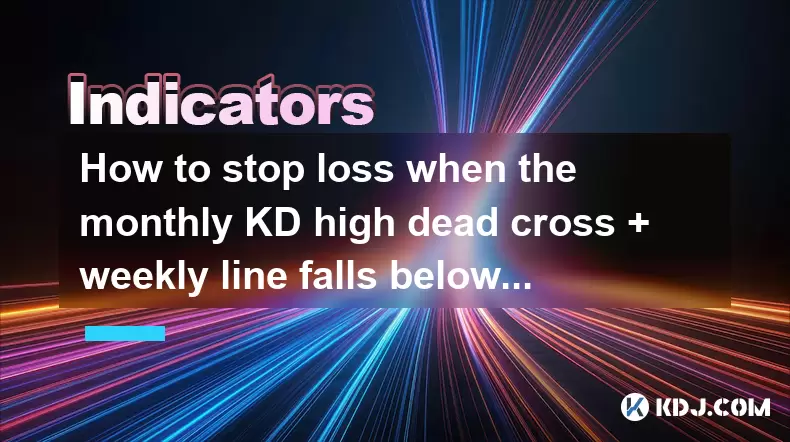
How to stop loss when the monthly KD high dead cross + weekly line falls below the 20-week line + daily line pulls back on the 5-day line?
Jul 24,2025 at 07:00am
Understanding the Indicators: KD, Weekly, and Daily Moving AveragesWhen traders analyze cryptocurrency price movements, they often rely on technical i...
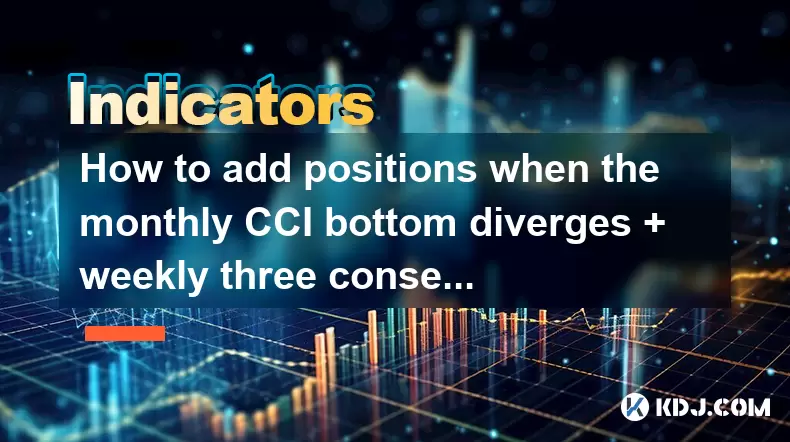
How to add positions when the monthly CCI bottom diverges + weekly three consecutive Yang + daily line gap is not filled?
Jul 24,2025 at 05:22am
Understanding the Monthly CCI Bottom DivergenceWhen analyzing the monthly CCI bottom divergence, traders are identifying a potential reversal signal i...
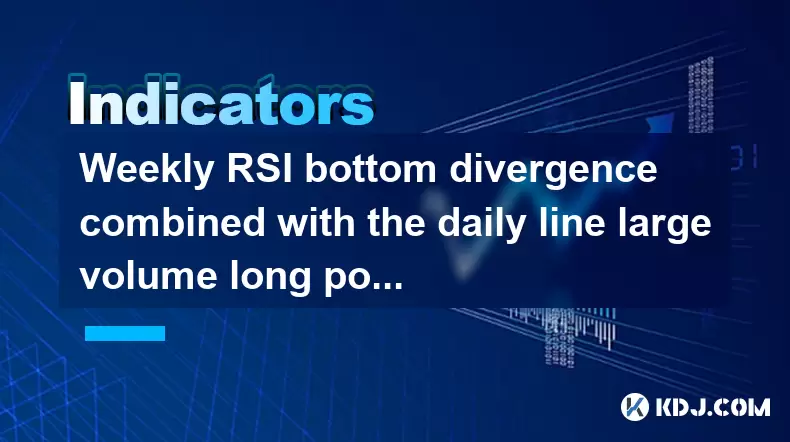
Weekly RSI bottom divergence combined with the daily line large volume long positive start signal
Jul 24,2025 at 05:28am
Understanding RSI Bottom Divergence in Cryptocurrency TradingIn the context of cryptocurrency trading, RSI bottom divergence is a powerful technical s...
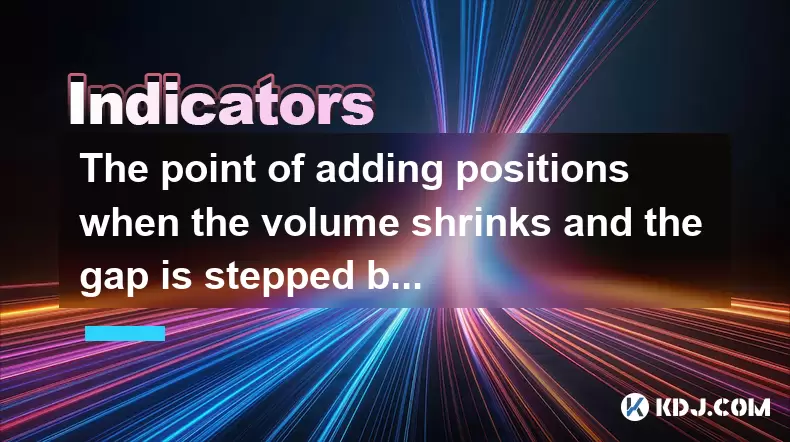
The point of adding positions when the volume shrinks and the gap is stepped back after the gap is jumped
Jul 24,2025 at 04:56am
Understanding the Gap Jump Phenomenon in Cryptocurrency TradingIn cryptocurrency trading, a gap jump occurs when the price of a digital asset opens si...
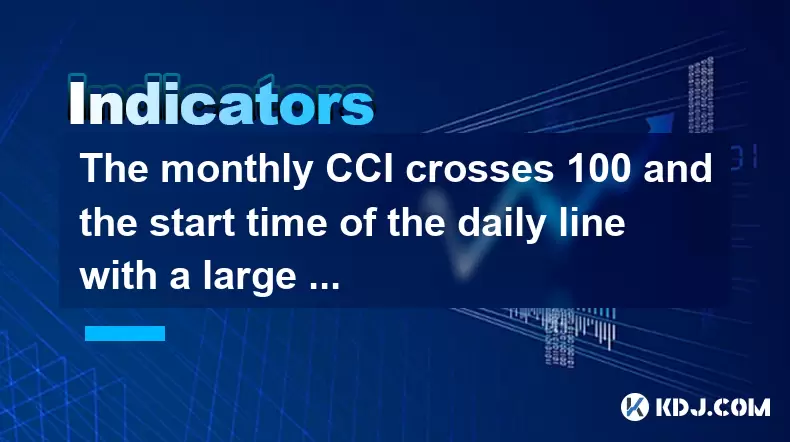
The monthly CCI crosses 100 and the start time of the daily line with a large volume positive line
Jul 24,2025 at 03:56am
Understanding the Monthly CCI Indicator and Its Significance at 100The Commodity Channel Index (CCI) is a momentum-based oscillator used to identify o...
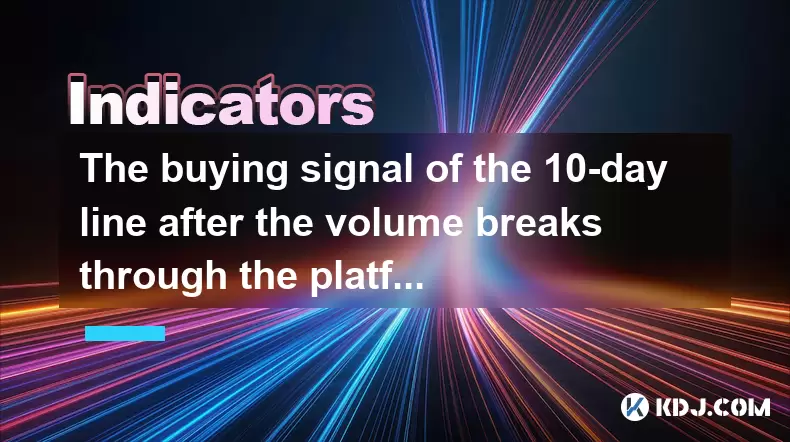
The buying signal of the 10-day line after the volume breaks through the platform
Jul 24,2025 at 06:00am
Understanding the 10-Day Moving Average in Cryptocurrency TradingIn cryptocurrency trading, moving averages are essential tools for identifying trends...

How to stop loss when the monthly KD high dead cross + weekly line falls below the 20-week line + daily line pulls back on the 5-day line?
Jul 24,2025 at 07:00am
Understanding the Indicators: KD, Weekly, and Daily Moving AveragesWhen traders analyze cryptocurrency price movements, they often rely on technical i...

How to add positions when the monthly CCI bottom diverges + weekly three consecutive Yang + daily line gap is not filled?
Jul 24,2025 at 05:22am
Understanding the Monthly CCI Bottom DivergenceWhen analyzing the monthly CCI bottom divergence, traders are identifying a potential reversal signal i...

Weekly RSI bottom divergence combined with the daily line large volume long positive start signal
Jul 24,2025 at 05:28am
Understanding RSI Bottom Divergence in Cryptocurrency TradingIn the context of cryptocurrency trading, RSI bottom divergence is a powerful technical s...

The point of adding positions when the volume shrinks and the gap is stepped back after the gap is jumped
Jul 24,2025 at 04:56am
Understanding the Gap Jump Phenomenon in Cryptocurrency TradingIn cryptocurrency trading, a gap jump occurs when the price of a digital asset opens si...

The monthly CCI crosses 100 and the start time of the daily line with a large volume positive line
Jul 24,2025 at 03:56am
Understanding the Monthly CCI Indicator and Its Significance at 100The Commodity Channel Index (CCI) is a momentum-based oscillator used to identify o...

The buying signal of the 10-day line after the volume breaks through the platform
Jul 24,2025 at 06:00am
Understanding the 10-Day Moving Average in Cryptocurrency TradingIn cryptocurrency trading, moving averages are essential tools for identifying trends...
See all articles

























































































